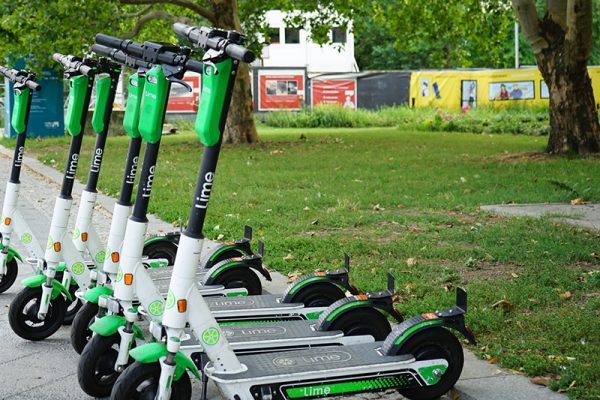
They’re easy to ride, easy to fold away, and require no maintenance at all. But, how eco-friendly are electric scooters? Well, we’re here to find out. These little electric machines have become one of the leading players among personal mobility vehicles. But, what is the reason for this?
Electric scooters were introduced a few years ago as an efficient and environmentally friendly solution for urban transport. And thanks to them, lots of people changed how they move around the city. One small step at a time, these gadgets are taking over the sidewalks, as well as squares and parks of large cities.
However, people seem to keep wondering if things are standing as they should. To be sure about the environmental impact these e-scooters have, we need to understand what they’re made of. Additionally, we should also think about the electricity that powers them. Is it made using green methods?
And we’re here to answer all of these questions. Therefore, if you’re interested in sustainable mobility, make sure to keep reading. You’ll learn how green these scooters really are and what kind of impact they have.
What are electric scooters made of?
Electric scooters are much smaller and lighter than any car, so you need a lot less material to build them. And that’s just the first point for the scooters.
There’s also the question of power. A car has to transport not only its’ passengers but also a heavy frame and chassis. An average SUV can weigh more than 2 tons. And because of the weight, they’re a lot less efficient. To put it simply, they need much more energy to power their motion.
 Since they’re incredibly light, electric scooters need very little energy to power.
Since they’re incredibly light, electric scooters need very little energy to power.
When it comes to motors that power these scooters, the technology behind them is nothing new. They’re made using the same rare earth minerals that electric car motors and wind generators use. However, here these are present in much smaller quantities.
Therefore, if you want to minimize your environmental impact, pick a scooter with a high-quality motor and a durable battery. This will save you from having to buy a new scooter every few years, but it’ll also be more convenient. Your journeys will never be cut short by bad batteries and poor build quality.
Additionally, by maximizing the life span of the product, you’ll help the planet as well. You can also find some green storage solutions as a sustainable way to store your possessions as opposed to regular storage. Both you and the Earth will benefit.
What materials are used in other parts of the scooter?
Pretty much every electric scooter out there is made of aluminum. Although there’s a lot of it, this material is quite energy-intensive to mine and extract.
On the other hand, the process of recycling aluminum consumes about 95% less energy as opposed to extracting the ore. So, if you can choose, try to pick a scooter made out of recycled aluminum. Steel is another metal used in e-scooter production. The good thing about it is that it comes in small quantities, and it’s as easily recycled as aluminum.
Unfortunately, not all materials found in these are that easy to reprocess. Avoid models that have parts made of plastic composites like carbon fiber. One might think that recycling these polymers isn’t too different from PET recycling. However, carbon fiber is almost impossible to reuse. Obviously, this makes it not so good for the environment.
 E-scooters are mostly made out of aluminum, which is an excellent material for the purpose.
E-scooters are mostly made out of aluminum, which is an excellent material for the purpose.
Should you have your own e-scooter or rent it?
So, how eco-friendly are electric scooters? Let’s see.
We all know that riding an electric scooter creates no exhaust fumes. They use an electric motor to move around, so there’s no surprise here. This also means that you’re not contributing air pollution to your city. Moreover, you’re recharging your vehicle with energy that is more carbon-neutral than diesel or petrol. And that is always a good thing.
According to research, an average car emits about 404 grams of CO2 per mile, and the emission of a personal e-scooter is roughly 40 grams per mile. However, when it comes to rentals, this number goes as high as 160 grams.
Why aren’t all electric scooters created equally?
We already determined that, when riding an e-scooter, rental or personal one, we produce zero emissions, and they both consume similar amounts of electricity when charging. So, why are these numbers so far apart?
As it turns out, the answer is in the support services for the rental fleets. These boost the adverse environmental effects, thus making them less eco-friendly than an individually owned example.
Rental agencies need to have trucks and vans to collect, recharge, and relocate scooters around the city. These are usually powered by petrol or diesel engines, but that’s just a fraction of the problem. Another big factor is the lifespan of rental scooters. Although each new generation is more robust, a typical rental scooter is expected to last no longer than 18 months. Therefore, rental scooters certainly aren’t one of the best ways to commute to work if you care about the environment.
 To answer the question of how eco-friendly are electric scooters, we need to divide them into two groups.
To answer the question of how eco-friendly are electric scooters, we need to divide them into two groups.
Conclusion
An electric scooter doesn’t come without its carbon footprint. Emissions are created while manufacturing it and through the generation of electricity that it needs to run. However, these emissions are much lower as opposed to almost any motor vehicle out there.
If you own an e-scooter, inform yourself about how to prolong its’ lifespan. Invest in a model made out of recycled materials that has a high-quality motor and batteries. This way, you won’t have to worry about how eco-friendly are electric scooters. You’ll only need to find ways to enjoy them even more.





There are no comments yet